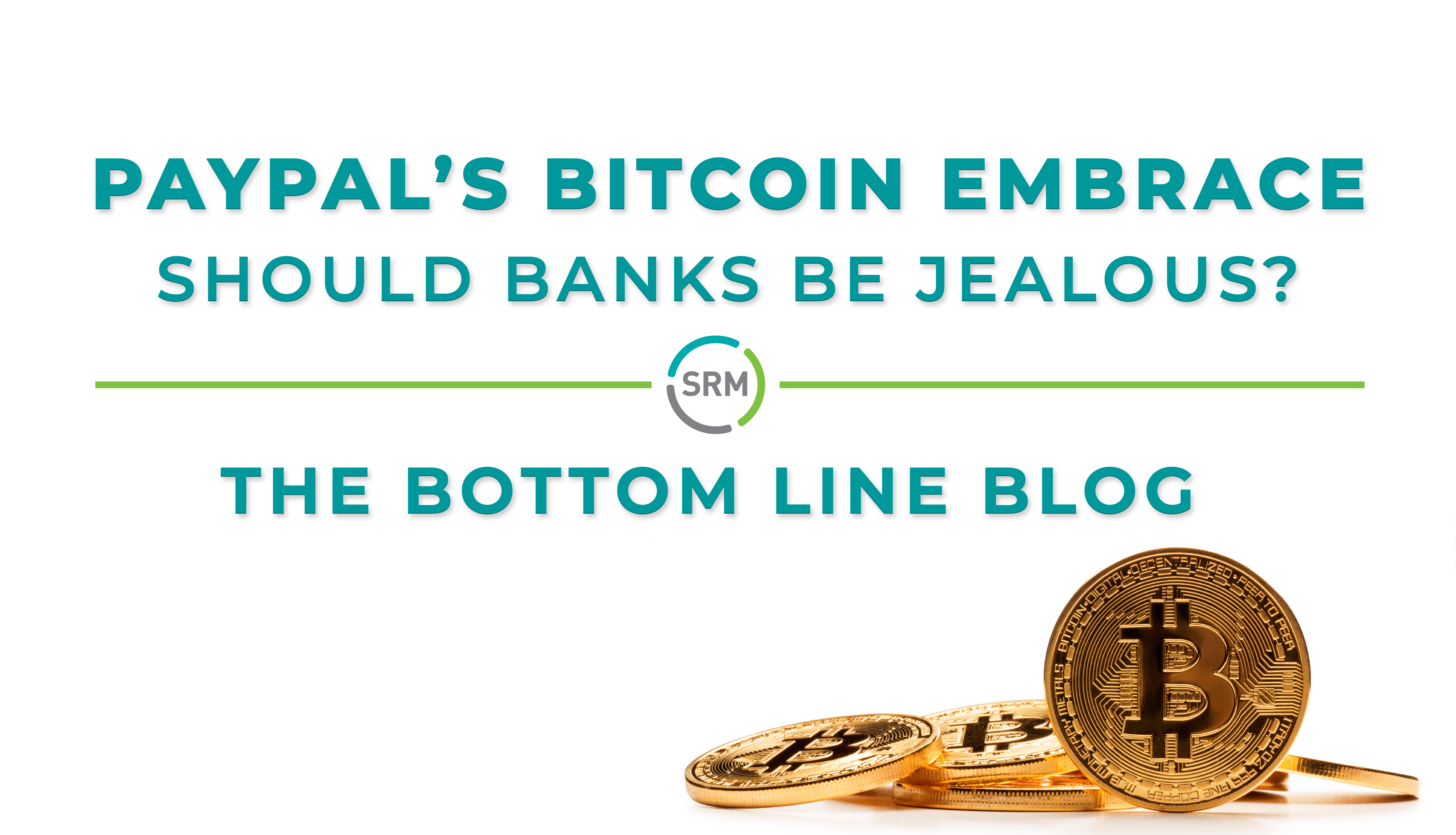
PayPal Holdings, Inc., recently announced enhancements that will enable its users to buy, hold, and sell cryptocurrencies within its app, and to pay for purchases with these crypto assets, as well. Most of the attention has naturally focused on Bitcoin - the household name of cryptocurrencies – and, by far, the largest. Not surprisingly, the price of Bitcoin quickly surged past $16,000, thanks to the associated visibility and implied credibility.
Despite the hype, though, this new functionality is not yet available. PayPal is accepting names for a waiting list - and will eventually also roll it out through its Venmo product. In our view, this is a logical continuation of PayPal’s broader financial services strategy, one that leaves little doubt of what’s at stake. The question is, is how should banks and credit unions be responding to PayPal’s latest move?
The First National Bank of PayPal
Most consumers simply think of PayPal as a convenient way to send money to friends and to make online purchases (for the purposes of this article, Venmo is included in any PayPal references). Few users likely notice that they leave funds in accounts in the process. These small amounts add up, and PayPal has quietly amassed enough consumer deposits to match the 20th largest US bank, according to published reports. These deposits aren’t FDIC insured, but, since the amounts per individual are not large, it’s doubtful many consumers’ care – or are even aware of the lack of protection.
PayPal positions itself as a digital wallet. Becoming the storage vehicle of choice for crypto balances represents a major step forward in establishing that mindset among its users. After all, if Bitcoin is to achieve mainstream status, the mass market user won’t expect to maintain a separate wallet, such as Coinbase, in order to use it.
Their latest innovation is rolling out the ability to make purchases using crypto across its network of 26 million merchants. While this is a major step in laying the groundwork for mainstream adoption, I don’t expect much volume on this front until the price of Bitcoin (BTC) stabilizes for an extended period - which it has yet to do. It’s hard to imagine many consumers selecting BTC over USD at checkout when that BTC may well be worth double the value a month from now.
Define Your Competitors Carefully
PayPal’s business model has been evolving ever since its origins as the paperless way to pay friends morphed into the de facto settlement vehicle for the then-booming eBay platform. Its aspirations across the broader financial services category are clearly visible in the issuance of physical payment cards and their expanding merchant network. These latest moves also make an aggressive play for continued deposit growth more likely.
The persistent drain of consumer deposits was perhaps the main driver for the Zelle initiative - which arguably has been large banks’ most successful counterattack against disruptors, such as PayPal, in years…and this recent news probably doesn’t resonate materially with Zelle. For those financial institutions that have already decided to give up on P2P (a mistake for most, by the way), nothing here is likely to change their minds.
The Bottom Line: The majority of banks and credit unions don’t need to be thinking about banking cryptocurrency yet - leave that to the fintechs and megabanks for the foreseeable future. Now is the time, however, to ensure your institution has a sound strategy to offer the services your consumers need; services that extend beyond payments into deposits and digital capabilities. However, this news should remind community banks and credit unions that PayPal is as much of a threat to core banking services as the megabanks. Until now, few if any consumers have actively thought about keeping a PayPal balance. Their latest moves may change that dynamic.
For more on the topic of payments disruptors, including Venmo and Zelle, download the SRM Academy Report: Are you Prepared for the Next Wave of Payments Disruption?
For more from the author, Jesse McGannon, click here.


